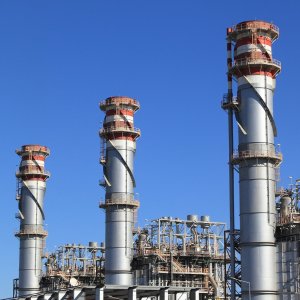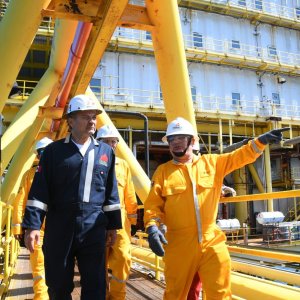Choppy Seas Ahead in Crude Oil Prices

STORY INLINE POST
The ongoing conflict between Russia and Ukraine is causing crude prices to reach levels not seen since before September 2014. Western countries have mounted a coordinated response to what is widely considered an unjustified Russian aggression to its Southern neighbor. As I write this, Brent crude price trades at US$114 per barrel. It briefly reached US$128 on March 8.
This might remind some readers of the old days of the oil industry, when billions of dollars would be invested in a single megaproject (those with total CAPEX greater than US$1 billion) with the promise of huge production. Even though there are still megaprojects under development (for example, ExxonMobil is investing US$10 billion in a deepwater project off the coast of Guyana), those golden days are inevitably coming to an end.
This is because most countries, and certainly the main consumers, are committed to substantial emission reductions and so are the oil majors, who typically are behind megaprojects. In fact, most oil majors are slowly but surely shifting their business models to make them more eco-friendly. Megaprojects will remain a tough sell.
How will the industry react to the current circumstances?
Through 2021, oil prices oscillated in the US$60-$70 range. Demand growth driven by the economic recovery had been readily met by OPEC and other producing countries that had cut back production during the downturn. But the recent price hike comes from a supply shock that cannot possibly be substituted in the short term. During 2021, Russia produced 11.3 million barrels a day (MBD) (out of which some 4.6MBD are exported), ranking third worldwide, just below the US and Saudi Arabia. What should we expect in the coming months and years?
Let’s start with the obvious: Russia is not shutting down its production. The oil industry has supply chains that have taken years to build and even though citizens in Western nations seem to tolerate higher prices at the pump as a consequence of a pseudo oil embargo on Russia, it is inevitable that some Russian oil will end up in Western countries’ refineries, but it is also inevitable that the dependency of Western countries’ refineries on Russian oil will diminish in time. Moving forward a few weeks and months, it seems obvious that OPEC (and most notably Saudi Arabia) will take up most of the demand that is trying to move away from Russia, but only up to a point.
Will the supply shock last long enough to justify investment commitments elsewhere? That would depend on the calculus of what happens in Russia. Why Russia and not Ukraine? Because no matter the outcome of the conflict in Ukraine (and to even speak of a winner and a loser seems meaningless at this point), Russia will remain isolated. That is because, again, regardless of the outcome, Russian President Vladimir Putin will continue with an assertive foreign policy. We can expect more cyberattacks, Russian bombers and fighter jets flying near NATO airspace, military exercises and other measures aimed to intimidate adversaries (it is for this very reason that both Sweden and Finland decided to break with a long tradition of neutrality and chose to seek NATO membership). Western nations will respond in kind and will continue to maintain sanctions.
So, the question is, who can increase production besides OPEC under the political uncertainty coming out of Russia? It seems that only the US could meaningfully achieve that in the relative short term. Today’s rig count in the US is only 478 versus 1,862 at its peak in 2014. Furthermore, the US has formidable technical capabilities and technology, abundant capital and infrastructure that can readily be put into high gear. US land projects are piecemeal segments that limit overall business risks, thus inviting capital.
Could a country like Venezuela take advantage of the current price hike? It seems highly unlikely, even if the US amends its relationship with the South American nation. Venezuela is in the exact opposite position to that of the US: it has insufficient and inadequate technical resources, little access to technology, no capital and decrepit infrastructure. Venezuela is not adding production (not meaningfully anyway) anytime soon. Another candidate is Brazil, which has seen a recent production increase and might continue on that trend, but a further increase involves substantial additional investments and long lead times because its projects tend to be in deep- and ultradeep water. Colombia and Mexico have wanted to increase production for several years but have been unable to. It seems unlikely that they can change this trend in the short term.
And what about Russia itself? What is Russia going to do with all that oil? In the short term, we could see big discounts (indeed this has already happened) to lure Western companies into a juicy deal. Companies that buy Russian oil will have a PR challenge that will have to be dealt with. But whatever the PR strategy, brand equity will inevitably take a hit and down the road they will seek new suppliers. Russia will not wait and will seek new customers. China would seem like the obvious first on the list because China is not going to impose sanctions on Russia anytime soon. In fact, on Feb. 4, it was announced that Russia and China had agreed to a 30-year, 10-billion-cubic-meter per year natural gas deal set to start flowing in two or three years. It’s not unreasonable to expect that Russia will do everything possible to supply China with all the oil that China is willing to buy. India, which imports more than 80 percent of its crude oil, is certainly another attractive alternative. But all of this will take time and effort. In the meanwhile, Russia will increasingly struggle to find customers.
Long term, there will be new challenges. With Russia locked out of international markets, technical capabilities, technology and capital will be increasingly difficult to find. Even imported goods, such as spare parts, will be in short supply. In time, Russian production will inevitably fall. The only possible alternative to this is Putin stepping down or being forcefully removed. A long shot at best.
We are all reasonably concerned about a potential escalation of the Russia-Ukraine conflict. On the one hand, Putin is being pushed into a tight spot, unlike anything that we have seen before. On the other, an expanded NATO will continue to support Ukraine, risking direct contact with Russian forces. I don’t need to explain the risks involved and the potential outcome. We all hope for a peaceful and prompt resolution. But even that will not mean that oil market dynamics go back to normal. We are entering choppy seas for some time.
(In collaboration with Andrés Castillo)
























